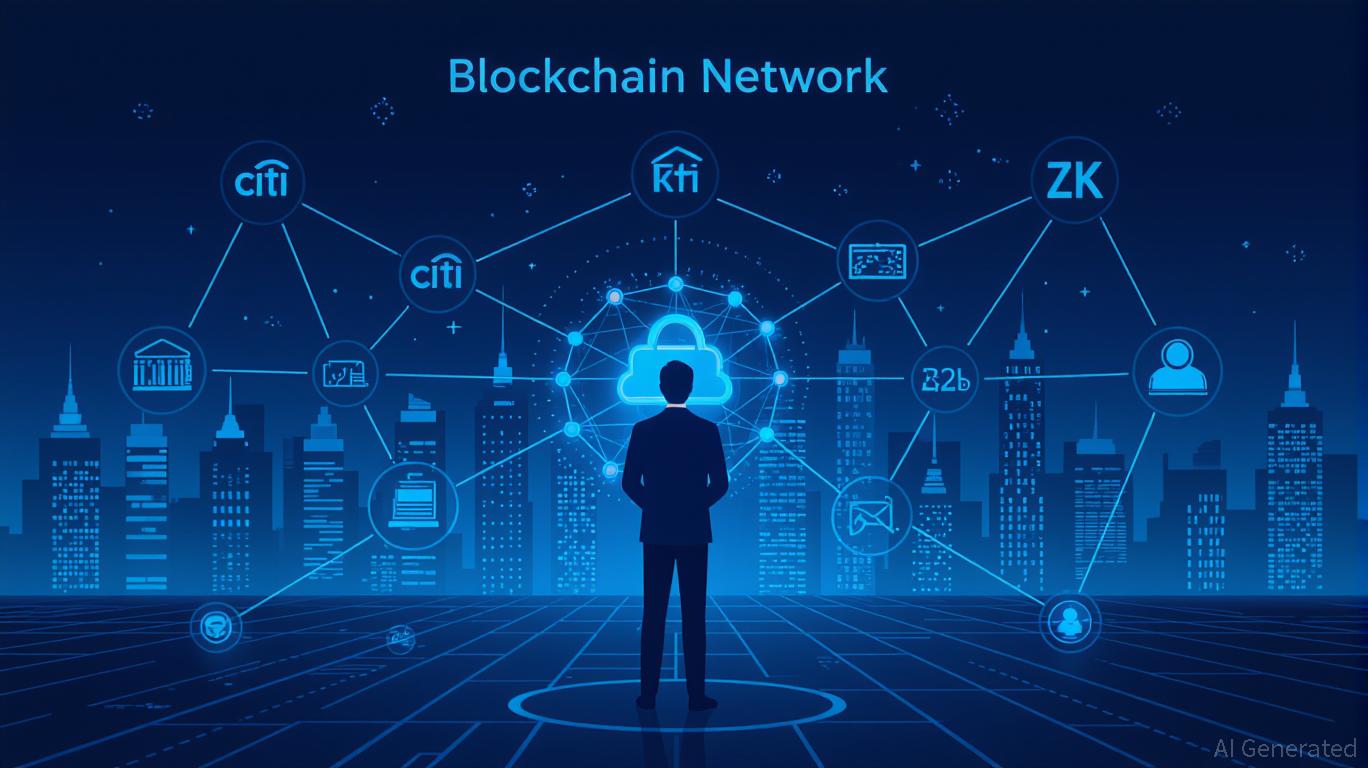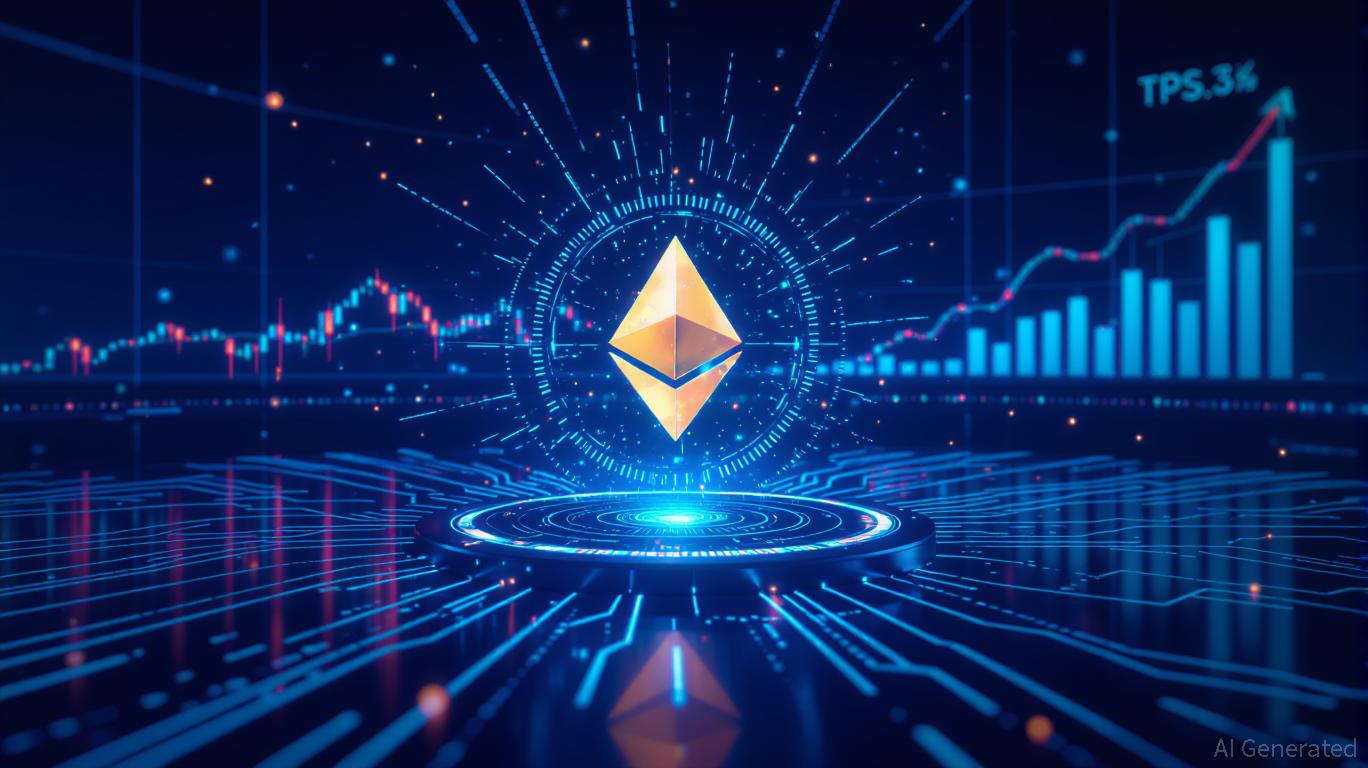XRP's Proven Power vs. Remittix's Risky Gamble in $4T PayFi Clash
- XRP and Remittix are reshaping the $4T PayFi sector through cross-border payment innovation and disruptive remittance models. - XRP's Stellar network upgrades and institutional adoption (e.g., CMB tokenized fund) reinforce its role in low-cost, high-speed transactions. - Remittix's $25M presale and 90% APY staking, paired with XRP integration and Visa card plans, position it as a high-risk, high-reward challenger. - Analysts highlight XRP's proven utility vs. Remittix's execution risks, with both facing

The global Payment Finance (PayFi) industry, now exceeding $4 trillion in value, is experiencing a surge in activity as
XRP’s ability to enable fast and affordable cross-border transactions has made it a vital component within the PayFi landscape. Recent improvements to the Stellar blockchain, such as faster processing and lower transaction costs, have made XRP even more attractive to banks and fintech companies. Market reports show XRP holding steady near $0.39 as of September 2025, with some analysts predicting a move past the $0.40 resistance level. The token’s growing use is further supported by its integration with platforms like Remittix, which utilizes XRP’s network to optimize remittance operations.
Remittix, a remittance solution built on blockchain technology, has secured $25 million and has been listed on exchanges including BitMart and LBank. By tapping into XRP’s infrastructure for international transfers, Remittix is drawing comparisons to established remittance providers. The project’s $250,000 token giveaway and upcoming plans for a
Although XRP benefits from a robust network and institutional support, Remittix’s rapid growth and unique offerings are changing the competitive dynamics. For example, Remittix’s 90% APY staking and practical features—such as worldwide spending cards—set it apart from projects like BlockchainFX and Rollblock, which are more focused on broader DeFi or GambleFi sectors. The adoption of XRP by major financial entities, such as CMB International’s tokenized fund on
Projections for XRP indicate it could reach between $0.60 and $1.00 by 2025, fueled by rising demand for international payment solutions. Remittix, on the other hand, faces questions about its ability to scale and comply with regulations, though its collaborations with auditors like CertiK and its Anjouan Gaming license address some of these issues. Experts advise that while XRP’s progress is based on established use cases, Remittix’s future will depend on its execution and acceptance in the market.
The expanding PayFi sector is drawing interest from both individual and institutional investors, with XRP and Remittix leading the charge. XRP’s integration with platforms like Remittix and its involvement in institutional tokenization projects underscore its value as both a utility and investment asset. Nevertheless, investors should thoroughly research, given the market’s volatility and regulatory challenges.
As PayFi continues to develop, XRP and Remittix are setting new standards for global financial transfers. XRP’s established reputation and Remittix’s innovative approach demonstrate the sector’s capacity to challenge traditional financial systems. Despite ongoing risks, the combination of reliable blockchain technology and creative applications positions these projects as key forces in the next wave of fintech adoption.
Disclaimer: The content of this article solely reflects the author's opinion and does not represent the platform in any capacity. This article is not intended to serve as a reference for making investment decisions.
You may also like
XRP Update: Digitap's Practical Applications Put XRP's Delayed Ambitions to the Test
- Digitap ($TAP) raised $1.4M in November 2025, outpacing rivals like Bitcoin Hyper and Pepenode with an 80% early investor discount. - The project combines crypto and fiat banking via a live app, Visa cards, and deflationary tokenomics, positioning it as XRP's real-world competitor. - $TAP's fixed 2B token supply and transaction-burning model create scarcity, with analysts projecting 50x-70x price growth by late 2026. - Digitap's 124% APR staking rewards and privacy-focused features like offshore-shielded

Vitalik Buterin Unveils a Fresh ZK Perspective and What It Means for the Crypto Industry
- Vitalik Buterin's GKR protocol revolutionizes ZK scalability, slashing verification costs by 10-15x and enabling ZKsync's 15,000 TPS with near-zero fees. - ZKsync's 150% token surge and institutional adoption by Citibank highlight ZK's market potential, while Starknet and Immutable expand use cases in DeFi and gaming. - Despite progress, Ethereum's modexp bottleneck and regulatory scrutiny of privacy coins like Zcash underscore technical and compliance challenges for ZK's long-term viability.

Vitalik Buterin Backs ZKsync: Accelerating Ethereum Layer 2 Expansion and Driving DeFi Growth
- Vitalik Buterin endorsed ZKsync's Atlas upgrade, praising its transformative potential for Ethereum's scalability and DeFi. - The upgrade's unified liquidity framework enables real-time settlements and near-zero fees, attracting 30+ institutions like Citibank. - ZKsync's TVL lags behind competitors, but ZK token's 30x trading volume surge reflects investor confidence in its tokenomics overhaul. - Institutional adoption and Buterin's support highlight ZKsync's role in bridging DeFi and traditional finance

Stellar News Today: XLM Battles at $0.2705—Major Players and Sellers Face Off at Crucial Resistance
- Stellar's XLM token saw volatile trading on Nov. 7, with price consolidating near $0.2702 after hitting key resistance at $0.2777 amid surging institutional volume. - Coordinated institutional buying of 2.5M and 1.5M tokens reversed bearish momentum, defending $0.2663 support while confirming $0.2777 resistance through 45.09M-token volume spikes. - Market remains divided as XLM struggles to break above $0.2815, with analysts warning renewed selling pressure could accelerate declines below $0.2709 amid mi